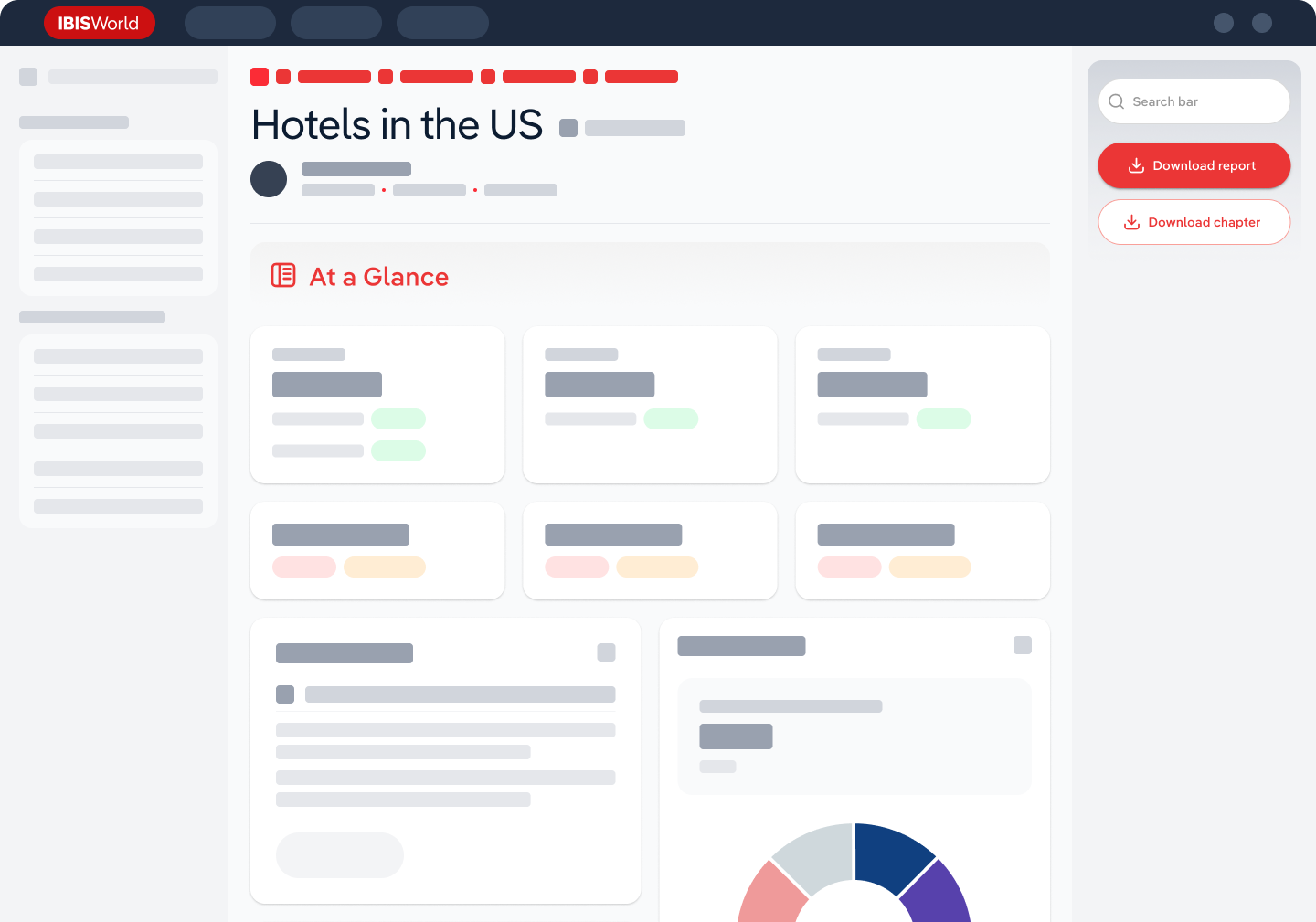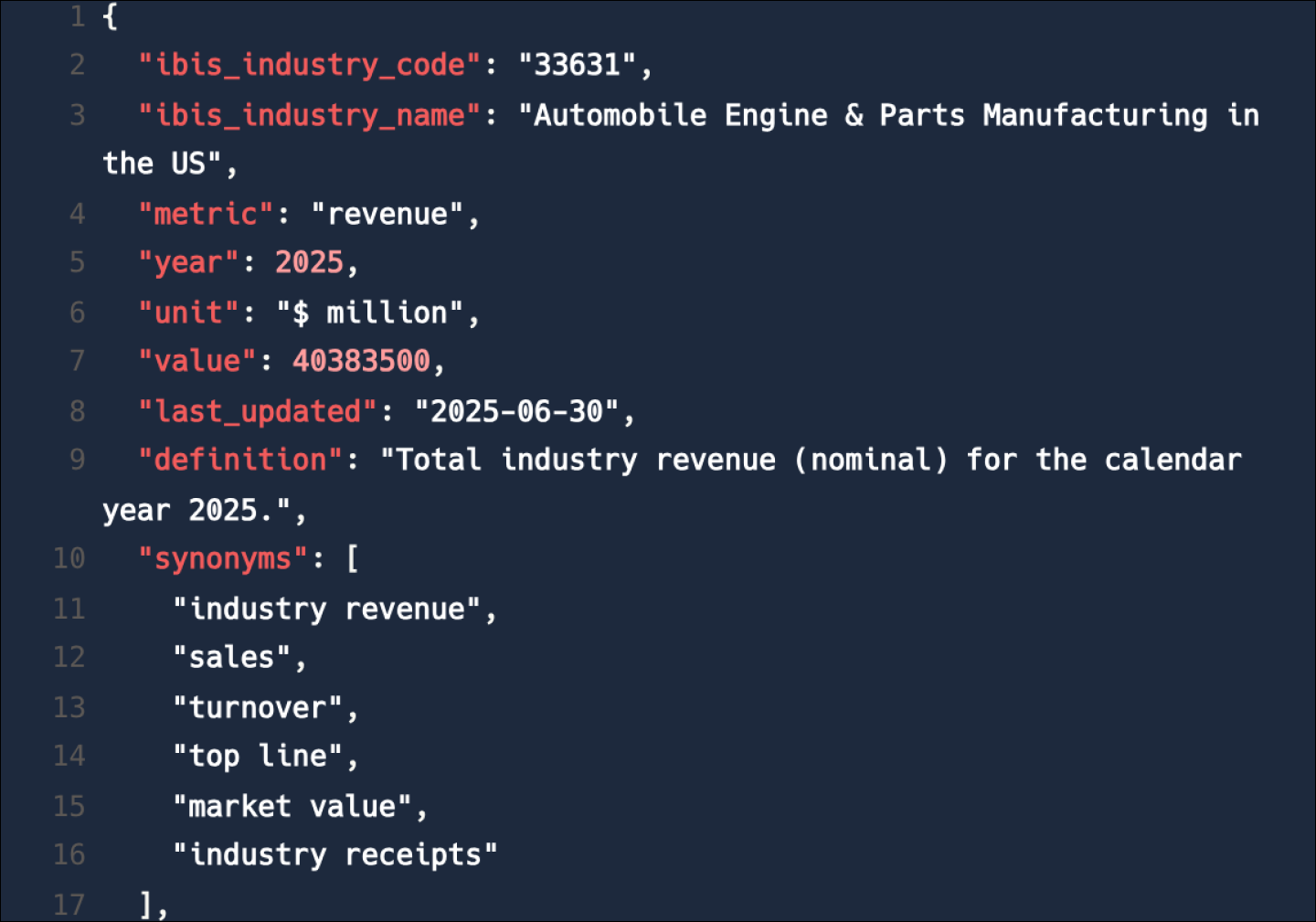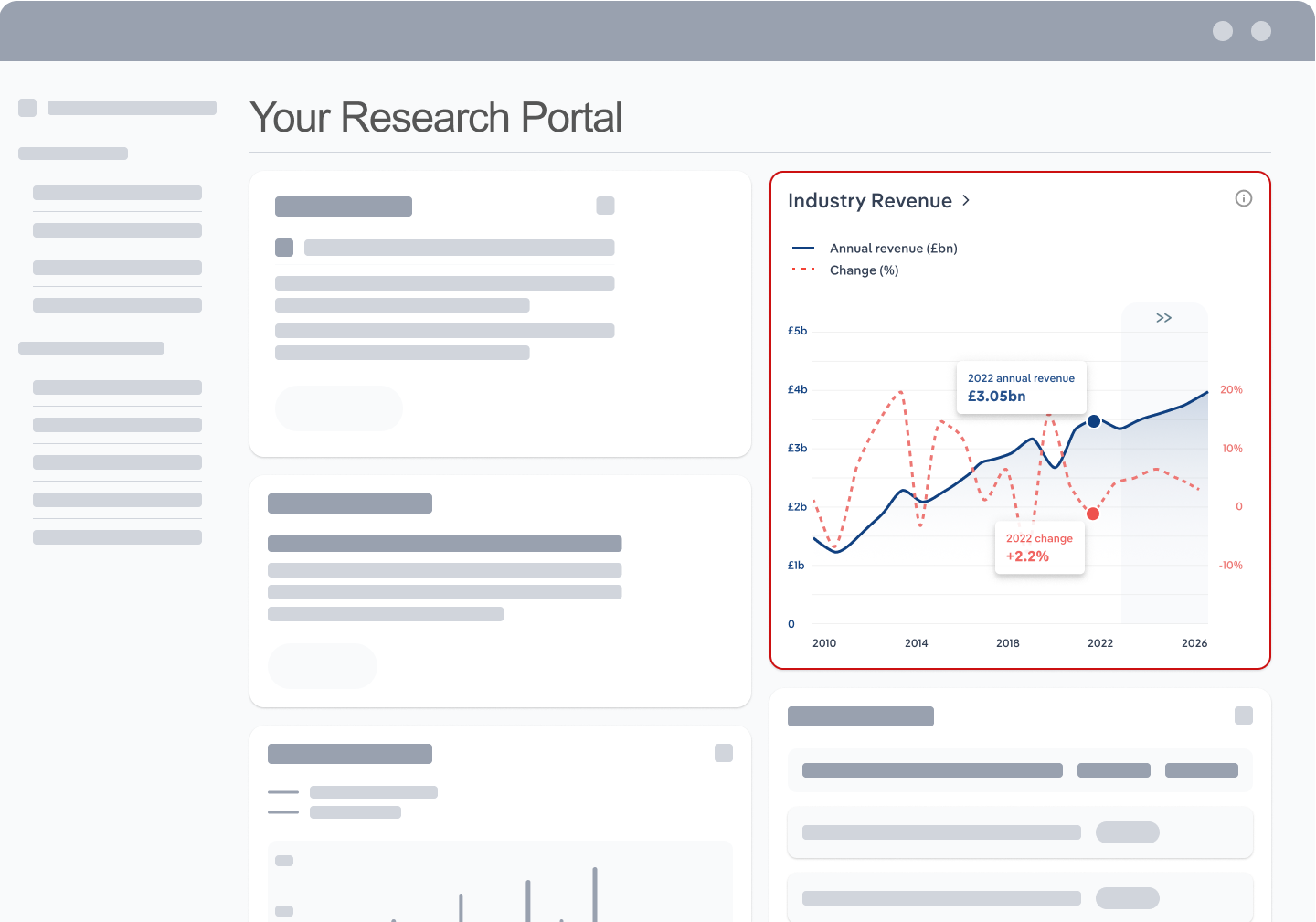Industry Statistics and Trends
Market size and recent performance (2015-2030)
Industry revenue has declined at a CAGR of 1.9 % over the past five years, to reach an estimated £2.1bn in 2025.
Trends and Insights
Online news continues to cripple newspaper sales
- The rise of digital alternatives has transformed how people access news, granting consumers real-time updates, easy access and interactive content. According to Ofgem in September 2024, seven in 10 people now consume news online in some capacity. Demand for print newspapers and magazines is tumbling as consumers increasingly turn to digital platforms for their news. This threatens newsagents, which have historically relied on sales of these products to sustain operations.
- Additional trends and insights available with purchase
Industry outlook (2025-2030)
Market size is projected to decline over the next five years.
Trends and Insights
The shift to online news shift continues to hit newsagents, but digital detoxes offer relief
- The popularity of online news sources will continue to erode sales for newsagents stocking traditional forms of media. Ofcom’s 2024 News Consumption in the UK report revealed that online platforms had overtaken TV for the first time, with online news consumption increasing six percentage points from 2020 levels. This trend is expected to persist as screens become more integrated into daily life, underscoring the need for newsagents to reduce their reliance on newspaper and magazine sales.
Biggest companies in the Newsagents & Stationery Stores in the UK
| Company | Market Share (%)
2026 | Revenue (£m)
2026 |
|---|---|---|
WH Smith plc | 768.2 | |
Ryman Ltd | 93.0 | |
The Works Stores Ltd | 87.4 |
To view the market share and analysis for all 4 top companies in this industry, view purchase options.
Products & Services Segmentation
Industry revenue is measured across several distinct product and services lines, including Newspapers and magazines, Greetings cards and Stationery . Newspapers and magazines is the largest segment of the Newsagents & Stationery Stores in the UK.
Trends and Insights
The paperless push challenges stationery sales
- Stationery includes writing tools, paper products and office supplies for both personal and professional use.
- More insights available in the full report
Table of Contents
About this industry
Industry definition
Newsagents and stationery stores primarily sell newspapers, magazines, greetings cards and stationery, including office supplies. Products are sourced from a variety of local and international suppliers and sold to consumers and businesses.
What's included in this industry?
Products and services covered in the Newsagents & Stationery Stores industry in the United Kingdom include Newspapers and magazines, Stationery and Greetings cards.Companies
Companies covered in the Newsagents & Stationery Stores industry in the United Kingdom include WH Smith plc, Ryman Ltd and The Works Stores Ltd.Purchase this report to view all 4 major companies in this industry.
Related Terms
Related terms covered in the Newsagents & Stationery Stores industry in the United Kingdom include newspaper circulation, soho, e-card, digital fatigue and ecotoxicity.Industry Code
SIC 47.62 - Newsagents & Stationery Stores in the UK
Performance
Get an indication of the industry's health through historical, current and forward-looking trends in the performance indicators that make or break businesses.
Analyst insights
Digital disruption reshapes the consumption of news. The hike in online news and social media platforms has eclipsed print media, with traditional newspaper sales plunging as...
In this chapter (4)
- Current Performance
- Outlook
- Volatility
- Life Cycle
Key metrics
- Annual Revenue, Recent Growth, Forecast, Revenue Volatility
- Number of Employees, Recent Growth, Forecast, Employees per Business, Revenue per Employee
- Number of Businesses, Recent Growth, Forecast, Employees per Business, Revenue per Business
- Total Profit, Profit Margin, Profit per Business
Charts
- Revenue, including historical (2015-2024) and forecast (2025-2030)
- Employees, including historical (2015-2024) and forecast (2025-2030)
- Businesses, including historical (2015-2024) and forecast (2025-2030)
- Profit, including historical (2015-2025)
- Industry Volatility vs. Revenue Growth
- Industry Life Cycle
Detailed analysis
- Trends in supply, demand and current events that are driving current industry performance
- Expected trends, economic factors and ongoing events that drive the industry's outlook
- Key success factors for businesses to overcome volatility
- How contribution to GDP, industry saturation, innovation, consolidation, and technology and systems influence the industry's life cycle phase.
Products and Markets
Learn about an industry's products and services, markets and trends in international trade.
Analyst insight
Lingering economic uncertainty tightens purse strings. Soaring prices have discouraged consumers and businesses from updating their office supplies and giving in to impulse p...
In this chapter
- Products & Services
- Major Markets
Key metrics
- Largest market segment and value in 2025
- Product innovation level
Charts
- Products & services segmentation in 2025
- Major market segmentation in 2025
Detailed analysis
- Trends impacting the recent performance of the industry's various segments
- Innovations in the industry's product or service offering, specialization or delivery method
- Key factors that successful businesses consider in their offerings
- Buying segments and key trends influencing demand for industry products and services
Geographic Breakdown
Discover where business activity is most concentrated in an industry and the factors driving these trends to find opportunities and conduct regional benchmarking.
Analyst insights
London and the South East continue to fuel sales. With high disposable incomes, dense populations and a thriving business environment, sales of office supplies and stationery...
In this chapter (1)
- Business Locations
Charts
- Share of revenue, establishment, wages and employment in each region
- Share of population compared to establishments in each region in 2025
Tables
- Number and share of establishments in each region in 2025
- Number and share of revenue each region accounts for in 2025
- Number and share of wages each region accounts for in 2025
- Number and share of employees in each region in 2025
Detailed analysis
- Geographic spread of the industry across Europe, and trends associated with changes in the business landscape
- Key success factors for businesses to use location to their advantage
Competitive Forces
Get data and insights on what's driving competition in an industry and the challenges industry operators and new entrants may face, with analysis built around Porter's Five Forces framework.
Analyst insights
Supermarket chains and online platforms eat into sales. Customers are increasingly leaning towards supermarkets and online platforms due to their convenience and ability to o...
In this chapter (4)
- Concentration
- Barriers to Entry
- Substitutes
- Buyer & Supplier Analysis
Key metrics
- Industry concentration level
- Industry competition level and trend
- Barriers to entry level and trend
- Substitutes level and trend
- Buyer power level and trend
- Supplier power level and trend
Charts
- Market share concentration among the top 4 suppliers from 2020-2025
- Supply chain including upstream supplying industries and downstream buying industries, flow chart
Detailed analysis
- Factors impacting the industry’s level of concentration, such as business distribution, new entrants, or merger and acquisition activity.
- Key success factors for businesses to manage the competitive environment of the industry.
- Challenges that potential industry entrants face such as legal, start-up costs, differentiation, labor/capital intensity and capital expenses.
- Key success factors for potential entrants to overcome barriers to entry.
- Competitive threats from potential substitutes for the industry’s own products and services.
- Key success factors for how successful businesses can compete with substitutes.
- Advantages that buyers have to keep favorable purchasing conditions.
- Advantages that suppliers have to maintain favorable selling conditions.
- Key success factors for how businesses can navigate buyer and supplier power.
Companies
Learn about the performance of the top companies in the industry.
Analyst insights
WH Smith’s strategic locations rive strong sales. By situating stores in high-traffic areas and growing its travel retail with acquisitions, the company has successfully harn...
In this chapter
- Market Share Concentration
- Companies
- Company Spotlights
Charts
- Industry market share by company in 2021 through 2025
- Major companies in the industry, including market share, revenue, profit and profit margin in 2025
- Overview of WH Smith plc's performance by revenue, market share and profit margin from 2019 through 2025
- Overview of Ryman Ltd's performance by revenue, market share and profit margin from 2019 through 2025
- Overview of The Works Stores Ltd's performance by revenue, market share and profit margin from 2019 through 2025
- Overview of revenue, market share and profit margin trend for one additional company
Detailed analysis
- Description and key data for WH Smith plc, and factors influencing its performance in the industry
- Description and key data for Ryman Ltd, and factors influencing its performance in the industry
- Description and key data for The Works Stores Ltd, and factors influencing its performance in the industry
- Description, key data and performance trends for one additional company
External Environment
Understand the demographic, economic and regulatory factors that shape how businesses in an industry perform.
Analyst insights
Minimum wage laws rule the industry. This National Minimum Wage Act ensures all employees are entitled to an hourly minimum wage, with non-compliance resulting in penalties t...
In this chapter
- External Drivers
- Regulation & Policy
- Assistance
Key metrics
- Regulation & policy level and trend
- Assistance level and trend
Charts
- Regulation & Policy historical data and forecast (2015-2030)
- Assistance historical data and forecast (2015-2030)
Detailed analysis
- Demographic and macroeconomic factors influencing the industry, including Regulation & Policy and Assistance
- Major types of regulations, regulatory bodies, industry standards or specific regulations impacting requirements for industry operators
- Key governmental and non-governmental groups or policies that may provide some relief for industry operators.
Financial Benchmarks
View average costs for industry operators and compare financial data against an industry's financial benchmarks over time.
Analyst insights
Fierce competition drains profit. Supermarket chains and big online retailers leverage their buying power to secure lower purchasing costs and drive prices down. To remain co...
In this chapter
- Cost Structure
- Financial Ratios
- Key Ratios
Key metrics
- Profit margin, and how it compares to the sector-wide margin
- Average wages, and how it compares to the sector-wide average wage
- Largest cost component as a percentage of revenue
- Industry average ratios for days' receivables, industry coverage and debt-to-net-worth ratio
Charts
- Average industry operating costs as a share of revenue, including purchases, wages, depreciation, utilities, rent, other costs and profit in 2025
- Average sector operating costs as a share of revenue, including purchases, wages, depreciation, utilities, rent, other costs and profit in 2025
- Investment vs. share of economy
Data tables
- Liquidity Ratios (2019-2023)
- Coverage Ratios (2019-2023)
- Leverage Ratios (2019-2023)
- Operating Ratios (2019-2023)
- Assets (2019-2023)
- Liabilities (2019-2023)
- Cash Flow & Debt Service Ratios (2015-2030)
- Revenue per Employee (2015-2030)
- Revenue per Enterprise (2015-2030)
- Employees per Establishment (2015-2030)
- Employees per Enterprise (2015-2030)
- Average Wage (2015-2030)
- Wages/Revenue (2015-2030)
- Establishments per Enterprise (2015-2030)
- IVA/Revenue (2015-2030)
- Imports/Demand (2015-2030)
- Exports/Revenue (2015-2030)
Detailed analysis
- Trends in the cost component for industry operators and their impact on industry costs and profitability
Key Statistics
Industry Data
Data Tables
Including values and annual change:
- Revenue (2015-2030)
- IVA (2015-2030)
- Establishments (2015-2030)
- Enterprises (2015-2030)
- Employment (2015-2030)
- Exports (2015-2030)
- Imports (2015-2030)
- Wages (2015-2030)
Top Questions Answered
Unlock comprehensive answers and precise data upon purchase. View purchase options.
What is the market size of the Newsagents & Stationery Stores industry in the United Kingdom in 2025?
The market size of the Newsagents & Stationery Stores industry in the United Kingdom is £2.1bn in 2025.
How many businesses are there in the Newsagents & Stationery Stores industry in the United Kingdom in 2025?
There are 2,158 businesses in the Newsagents & Stationery Stores industry in the United Kingdom, which has declined at a CAGR of 4.5 % between 2020 and 2025.
How may import tariffs affect the Newsagents & Stationery Stores industry in the United Kingdom?
The Newsagents & Stationery Stores industry in the United Kingdom is unlikely to be materially impacted by import tariffs with imports accounting for a low share of industry revenue.
How may export tariffs affect the Newsagents & Stationery Stores industry in the United Kingdom?
The Newsagents & Stationery Stores industry in the United Kingdom is unlikely to be materially impacted by export tariffs with exports accounting for a low share of industry revenue.
Has the Newsagents & Stationery Stores industry in the United Kingdom grown or declined over the past 5 years?
The market size of the Newsagents & Stationery Stores industry in the United Kingdom has been declining at a CAGR of 1.9 % between 2020 and 2025.
What is the forecast growth of the Newsagents & Stationery Stores industry in the United Kingdom over the next 5 years?
Over the next five years, the Newsagents & Stationery Stores industry in the United Kingdom is expected to decline.
What are the biggest companies in the Newsagents & Stationery Stores industry in the United Kingdom?
The biggest companies operating in the Newsagents & Stationery Stores industry in the United Kingdom are WH Smith plc, Ryman Ltd and The Works Stores Ltd
What does the Newsagents & Stationery Stores industry in the United Kingdom include?
Newspapers and magazines and Stationery are part of the Newsagents & Stationery Stores industry in the United Kingdom.
Which companies have the highest market share in the Newsagents & Stationery Stores industry in the United Kingdom?
The company holding the most market share in the Newsagents & Stationery Stores industry in the United Kingdom is WH Smith plc.
How competitive is the Newsagents & Stationery Stores industry in the United Kingdom?
The level of competition is high and increasing in the Newsagents & Stationery Stores industry in the United Kingdom.
Methodology
How are IBISWorld reports created?
IBISWorld has been a leading provider of trusted industry research for over 50 years to the most successful companies worldwide. With offices in Australia, the United States, the United Kingdom, Germany and China, we are proud to have local teams of analysts that conduct research, data analysis and forecasting to produce data-driven industry reports.
Our analysts start with official, verified and publicly available sources of data to build the most accurate picture of each industry. Analysts then leverage their expertise and knowledge of the local markets to synthesize trends into digestible content for IBISWorld readers. Finally, each report is reviewed by one of IBISWorld’s editors, who provide quality assurance to ensure accuracy and readability.
IBISWorld relies on human-verified data and human-written analysis to compile each standard industry report. We do not use generative AI tools to write insights, although members can choose to leverage AI-based tools within the platform to generate additional analysis formats.
What data sources do IBISWorld analysts use?
Each industry report incorporates data and research from government databases, industry-specific sources, industry contacts, and our own proprietary database of statistics and analysis to provide balanced, independent and accurate insights.
Key data sources in the UK include:
- Office for National Statistics
- Office for Budget Responsibility
- Bank of England
Analysts also use industry specific sources to complement catch-all sources, although their perspective may focus on a particular organization or representative body, rather than a clear overview of all industry operations. However, when balanced against other perspectives, industry-specific sources provide insights into industry trends.
These sources include:
- Industry and trade associations
- Industry federations or regulators
- Major industry players annual or quarterly filings
Finally, IBISWorld’s global data scientists maintain a proprietary database of macroeconomic and demand drivers, which our analysts use to help inform industry data and trends. They also maintain a database of statistics and analysis on thousands of industries, which has been built over our more than 50-year history and offers comprehensive insights into long-term trends.
How does IBISWorld forecast its data?
IBISWorld’s analysts and data scientists use the sources above to create forecasts for our proprietary datasets and industry statistics. Depending on the dataset, they may use regression analysis, multivariate analysis, time-series analysis or exponential smoothing techniques to project future data for the industry or driver. Additionally, analysts will leverage their local knowledge of industry operating and regulatory conditions to impart their best judgment on the forecast model.
IBISWorld prides itself on being a trusted, independent source of data, with over 50 years of experience building and maintaining rich datasets and forecasting tools. We are proud to be the keystone source of industry information for thousands of companies across the world.
Learn more about our methodology and data sourcing on the Help Center.










